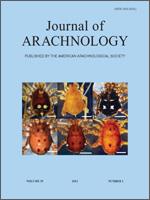The arachnid order Opiliones, and the suborder Cyphophthalmi in particular, have recently been used to test biogeographical patterns in Southeast Asia due to their ancient age and extremely low vagility. Here we report the first Cyphophthalmi—two juveniles—known from Mindanao in the southern Philippine Archipelago, and we place them in a molecular phylogeny to test biogeographical hypotheses for their colonization of that island. Five molecular markers were sequenced from one specimen, three from the other, and these sequences were added to a previously completed phylogenetic analysis. The specimens were recovered as members of a clade found almost exclusively on Borneo. Their deep placement within this clade suggests a very old origin and colonization that perhaps involved the mysterious landmass now underlying Mindanao's Zamboanga Peninsula. This species prompts new questions about the abilities of Southeast Asian Cyphophthalmi (Stylocellidae) to disperse and colonize, and it emphasizes how much remains to be understood about the geological history of the Philippines.
How to translate text using browser tools
1 April 2011
An old lineage of Cyphophthalmi (Opiliones) discovered on Mindanao highlights the need for biogeographical research in the Philippines
Ronald M. Clouse,
David M. General,
Arvin C. Diesmos,
Gonzalo Giribet
ACCESS THE FULL ARTICLE

The Journal of Arachnology
Vol. 39 • No. 1
April 2011
Vol. 39 • No. 1
April 2011
biogeography
Borneo
harvestmen
Southeast Asia
Stylocellidae
Zamboanga




